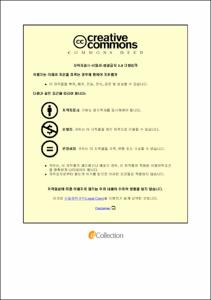Ulsan Univ. Repository
Thesis
General Graduate School
Computer Engineering & Information Technology
2. Theses (Ph.D)
RESEARCH ON EFFICIENT TRANSMISSION FOR DIMMING CONTROL IN VISIBLE LIGHT COMMUNICATIONS
- Abstract
- In this thesis, first we consider 50% dimming case with run-length limited (RLL) codes, and propose a new decoding algorithm based on maximum likelihood (ML) decoding of RLL codes with on-off keying (OOK) modulation and Reed-Solomon (RS) codes in visible light communication (VLC) systems. Conventional RLL codes in VLC systems are used for 50% dimming and hard decision of RLL decoder is considered. However, in the receiver of our model, the RLL decoder based on ML decoding makes better estimation for channel decoder. Simulation results show that our proposed method get signal-to-noise ratio (SNR) gain in bit error rate (BER) compared with one of RLL hard decoding.
In order to improve performance, then a modified decoding algorithm based on multiple output candidates for a RLL decoder in VLC with OOK modulation and RS codes is studied. In this receiver model, the proposed RLL decoder produces multiple candidates with greater probabilities to enhance the throughput in the VLC system. We also propose a selection method based on a cyclic redundancy check (CRC). A significant advantage of our proposed method is that it leads to performance enhancement without any change in the transmitter in VLC systems. Simulation results show that the BER of our proposed method is better than that of RLL hard decoding; the performance also improves further with a larger number of candidates.
Then, we proposed a symbol level soft (SLS) output RLL decoding algorithm since previous ML decoding belong to hard output RLL decoding (even with multiple candidates), the soft output of RLL decoding can provide more information for concatenated error correction codes (ECC), here consider RS codes. Moreover, conventional RS codes adopt Berlekamp-Massey (BM) algorithm which use hard input. Therefore, SLS RLL are concatenated with RS codes which use geometric decoding algorithm. Simulation results show that that the BER performance of SLS RLL is better than ML RLL decoding.
Next, we proposed a bit level soft (BLS) output RLL decoding algorithm, which has more widely applications, it can be concatenated with powerful ECC, such as low-density parity-check (LDPC) codes, turbo codes, and polar codes. However, we first consider RS codes with iterative decoding, in order to compare with ML RLL, and SLS RLL which are also concatenated with RS codes. Simulation result show that proposed BLS RLL has better frame error rate (FER) performance, which is advantage for application to hybrid automatic repeat request (ARQ).
Next, modified Bahl, Cocke, Jelinek and Raviv (BCJR) algorithm is considered to connect with BLS RLL decoding. Viterbi algorithm is generally used for convolutional codes decoding which is hard output decoding, however, the modified BCJR can make soft output. The simulation result show that modified BCJR has better performance once convolutional codes are considered.
Finally, dimming control (for various dimming values) algorithm is proposed. RLL codes are used to provide 50% dimming, other dimming value can be obtained by using compensation symbol (or puncturing). The state of art polar codes, which is the first codes proven to achieve the Shannon capacity, are considered. The reference considers previous result about LDPC codes and RS codes. Simulation results show that our proposed algorithm has best performance to compare with referenced ones
- Issued Date
- 2018
- Awarded Date
- 2018-08
- Type
- Dissertation
- Affiliation
- 울산대학교
- Department
- 일반대학원 전기전자컴퓨터공학과
- Advisor
- 김성환(Sunghwan Kim)
- Degree
- Doctor
- Publisher
- 울산대학교 일반대학원 전기전자컴퓨터공학과
- Language
- eng
- Rights
- 울산대학교 논문은 저작권에 의해 보호받습니다.
- Appears in Collections:
- Computer Engineering & Information Technology > 2. Theses (Ph.D)
- 파일 목록
-
-
Download
 200000109560.pdf
기타 데이터 / 1.93 MB / Adobe PDF
200000109560.pdf
기타 데이터 / 1.93 MB / Adobe PDF
-
Items in Repository are protected by copyright, with all rights reserved, unless otherwise indicated.